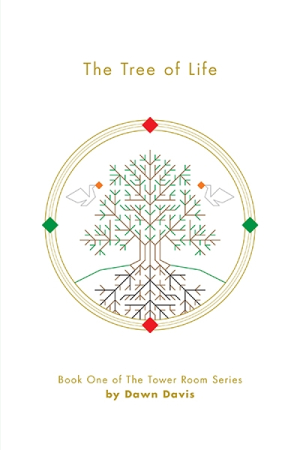The Tree of Life
Rich historical detail combines with time travel in this YA adventure.
Past blends with present in this genre-crossing historical adventure story with a time-travel twist. Canadian tweens Charlotte and Henry are unintentionally propelled sixty years back through time to the early days of World War II in Dawn Davis’s The Tree of Life. While initially guessing that their mission is to locate the missing “tree of life brooch” they’d been eavesdropping about right before the time shift, Charlotte and Henry’s presence expands into a mission of righting social injustice as well as pushing the boundaries of friendship and family relationships.
Audacious Charlotte is a self-described sneak. Soft-spoken and shy Henry, whom Charlotte describes as suffering from “eidetic memory bog,” is her only friend. The pair’s time-travel adventure begins when they enter the forbidden tower room of the house where Charlotte is being raised by her grandfather. During their journey, the previously inseparable friends drift apart, finding new relationships, skills, and knowledge as they explore their new lives in 1939 Rose Park at the dawn of World War II.
At this point in the novel, the narration meanders a bit as new characters and settings are introduced with rich detail. Connections are made between these new people and places during what only Charlotte and Henry realize is the dawn of a tumultuous period in history. Small, suspenseful subplots involving various characters keep the pages turning until the separate story lines reconverge.
Intelligently crafted and carefully plotted, this novel draws from the best of the genres it represents. The mysterious tower room is the time-travel device, and a plausible effort is made to explain how and why it works, lending interesting and credible sci-fi elements to the story. The late-1930s Canadian setting, a rarity in published historical fiction for youth, is fleshed out through both frequent references to period details like Shirley Temple and Tom Mix comics, and vividly described scenes in iconic settings, such as an excursion to get ice cream at a soda shop featuring a “white marble countertop with seven red leather stools.”
Subtle elements of foreshadowing reward observant readers, as when Charlotte and Henry are chosen to research the 1930s for a school project before their time travel, or when Charlotte’s eyes rest on A Connecticut Yankee in King Arthur’s Court soon after she is sent back into the past.
This lengthy and complicated novel seems designed to appeal to YA readers who are older than the fifth-grader main characters. The vibrant historical detail, thoughtfully constructed plot, well-fleshed-out secondary characters of a variety of ages, and thought-provoking presentation of anti-semitism in Canada during the 1930s are more than enough to intrigue and satisfy an older audience as well as tweens, or any reader with an interest in twentieth-century Canadian history.
Reviewed by
Carolyn Bailey
Disclosure: This article is not an endorsement, but a review. The publisher of this book provided free copies of the book and paid a small fee to have their book reviewed by a professional reviewer. Foreword Reviews and Clarion Reviews make no guarantee that the publisher will receive a positive review. Foreword Magazine, Inc. is disclosing this in accordance with the Federal Trade Commission’s 16 CFR, Part 255.

